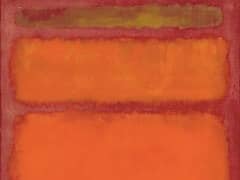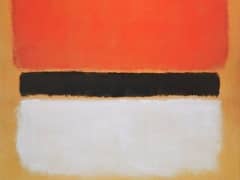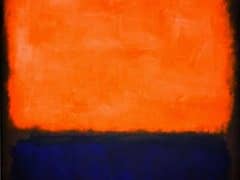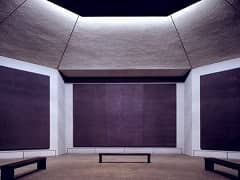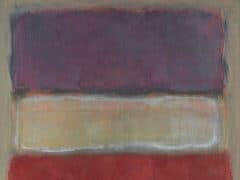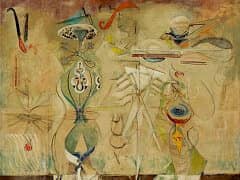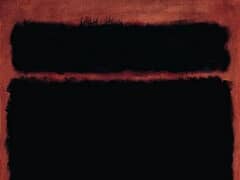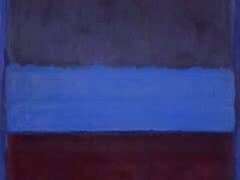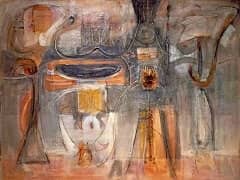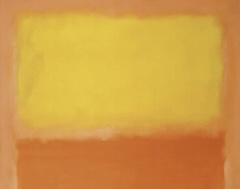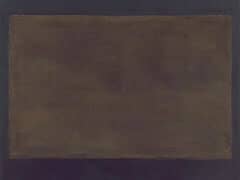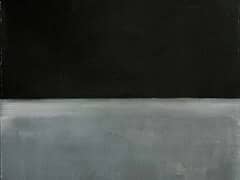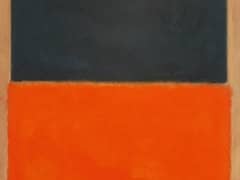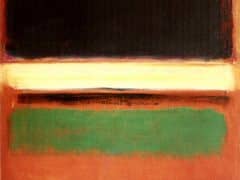Black on Maroon, (1958) by Mark Rothko
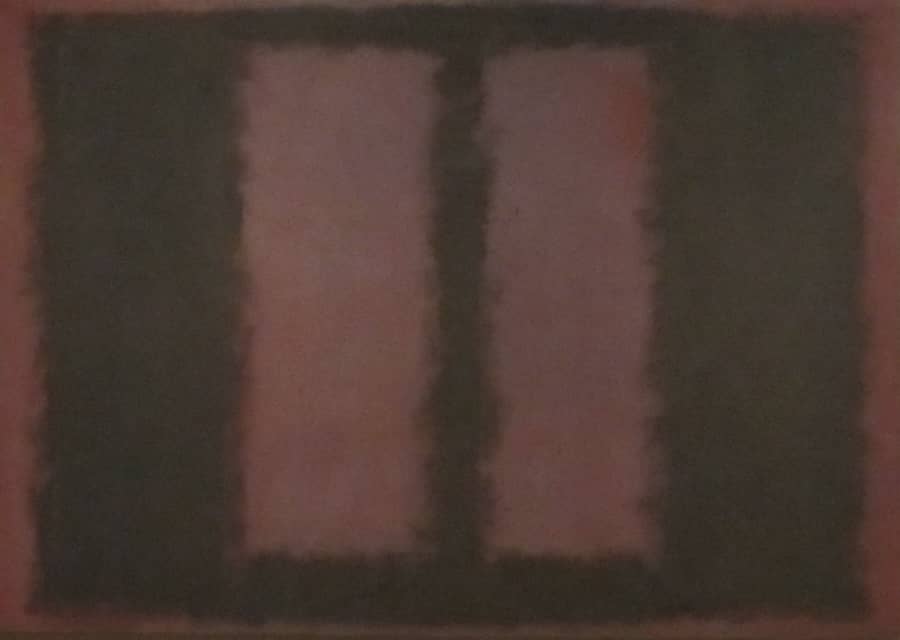
Black on Maroon comes from one of three series of canvases, painted by Rothko in 1958, produced as a commission for murals for The Four Seasons Restaurant.
The base colour of the painting is a deep maroon. As is suggested by the work's title, this is overlaid with a large black rectangle, which in turn encloses two slimmer, vertical maroon rectangles, suggesting a window-like structure. The black paint forms a solid block of colour but the edges are feathered, blurring into the areas of maroon. Different pigments have been used within the maroon, blending the colour from a deep wine to a muted mauve with accents of red.
Rothko's original conception for the work became increasingly sombre, but as time went on, he adopted an increasingly solemn tone. He later said:
After I had been at work for some time I realised that I was much influenced subconsciously by Michelangelo's walls in the staircase room of the Medicean Library in Florence.
He achieved just the kind of feeling I'm after ...". Eventually, this darkness progressed so far that he felt compelled to abandon his initial series altogether and begin again, using the mixture of red, maroon, and black
which can be seen in the finished painting. ”
Rothko was notoriously secretive about his methods, refusing to let even his studio assistants watch him paint. Yet the clues he left within the murals have informed us of the variety of materials he used and his layering techniques that were innovative for the time. Research shows that Rothko used materials far beyond the conventional range sold for artists, modifying the properties of oil paints to achieve the flow, drying time and colours he needed.
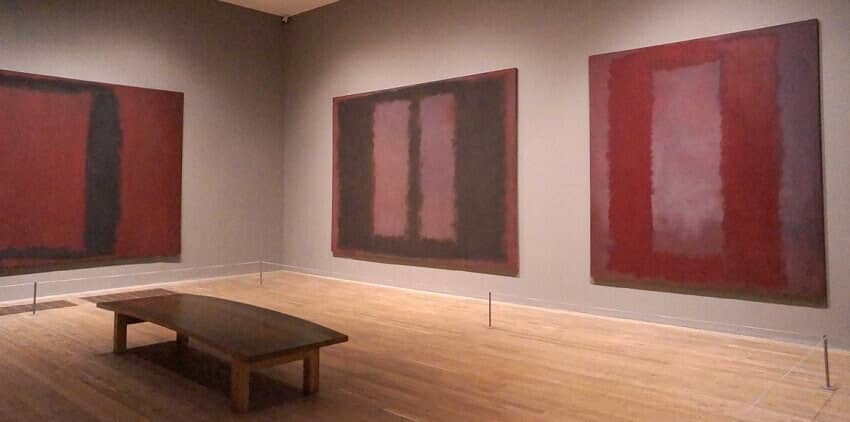
Behind Rothko's use of intense color was a desire to portray the emotion of the human experience. Often the colors Rothko used created an illusionistic effect of shimmering, pulsating movement as they were impacted by the play of light and their relationship to each other.

